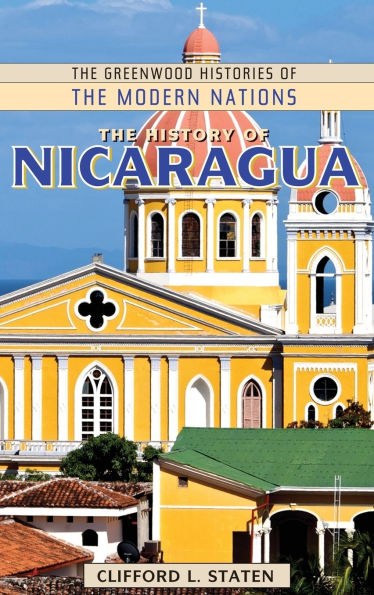Speaking of his upbringing, Nicaraguan President Daniel Ortega once said,"We were anti-Coca-Cola, anti-comic book, against everything good and bad represented by the United States, except baseball". Since taking office in January 2007, Ortega has continued to reject both capitalism and the United States, which he refers to as the imperial power.
Notwithstanding Nicaraguan President Daniel Ortega's disdain for the United States, our nation has played a significant role in shaping Nicaraguan nationalism, as well as the country's political, economic, and social systems. The History of Nicaragua was written, in part, to help students and other interested readers understand that relationship, providing them with an up-to-date, concise, and analytical history of the Central American nation.
The book begins by describing the people, geography, culture, and current political, economic, and social systems of Nicaragua. The remainder of the volume is devoted to a chronological history, emphasizing recurring themes or factors that have shaped the modern state. These include the importance of elite families such as the Somoza dynasty that ruled for more than 40 years. Other topics include the agro-export model of economic development, modern Nicaraguan nationalism, the Sandinista revolution and its legacy, and the democratic transition that began in 1990.
Speaking of his upbringing, Nicaraguan President Daniel Ortega once said,"We were anti-Coca-Cola, anti-comic book, against everything good and bad represented by the United States, except baseball". Since taking office in January 2007, Ortega has continued to reject both capitalism and the United States, which he refers to as the imperial power.
Notwithstanding Nicaraguan President Daniel Ortega's disdain for the United States, our nation has played a significant role in shaping Nicaraguan nationalism, as well as the country's political, economic, and social systems. The History of Nicaragua was written, in part, to help students and other interested readers understand that relationship, providing them with an up-to-date, concise, and analytical history of the Central American nation.
The book begins by describing the people, geography, culture, and current political, economic, and social systems of Nicaragua. The remainder of the volume is devoted to a chronological history, emphasizing recurring themes or factors that have shaped the modern state. These include the importance of elite families such as the Somoza dynasty that ruled for more than 40 years. Other topics include the agro-export model of economic development, modern Nicaraguan nationalism, the Sandinista revolution and its legacy, and the democratic transition that began in 1990.

The History of Nicaragua
175
The History of Nicaragua
175Related collections and offers

Product Details
| ISBN-13: | 9780313360374 |
|---|---|
| Publisher: | Bloomsbury Academic |
| Publication date: | 05/20/2010 |
| Series: | The Greenwood Histories of the Modern Nations |
| Pages: | 175 |
| Product dimensions: | 6.20(w) x 9.30(h) x 0.80(d) |



